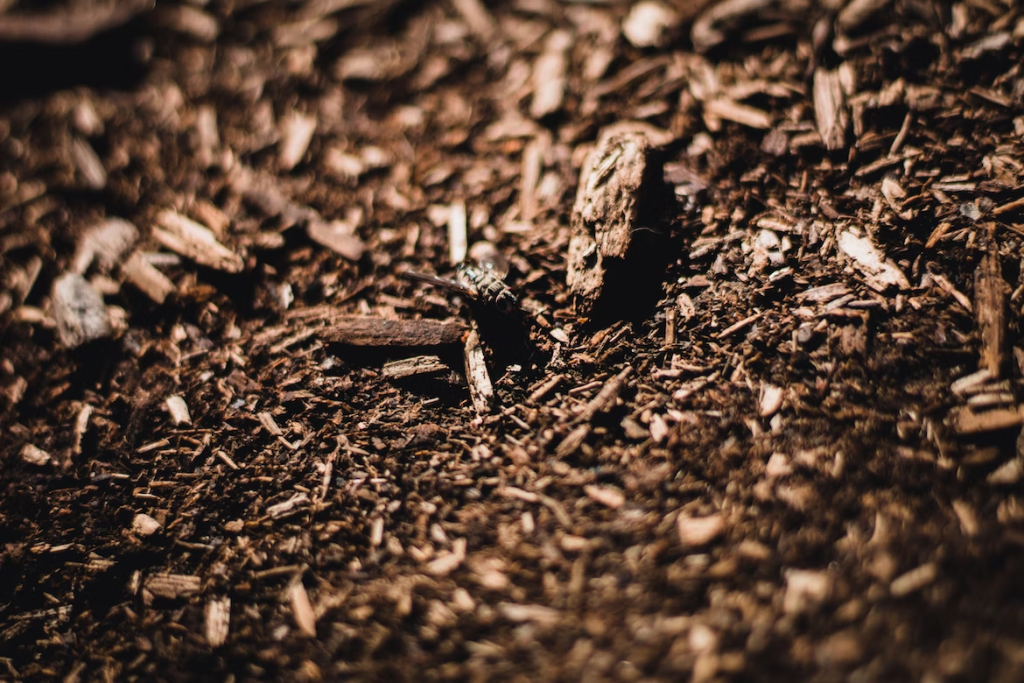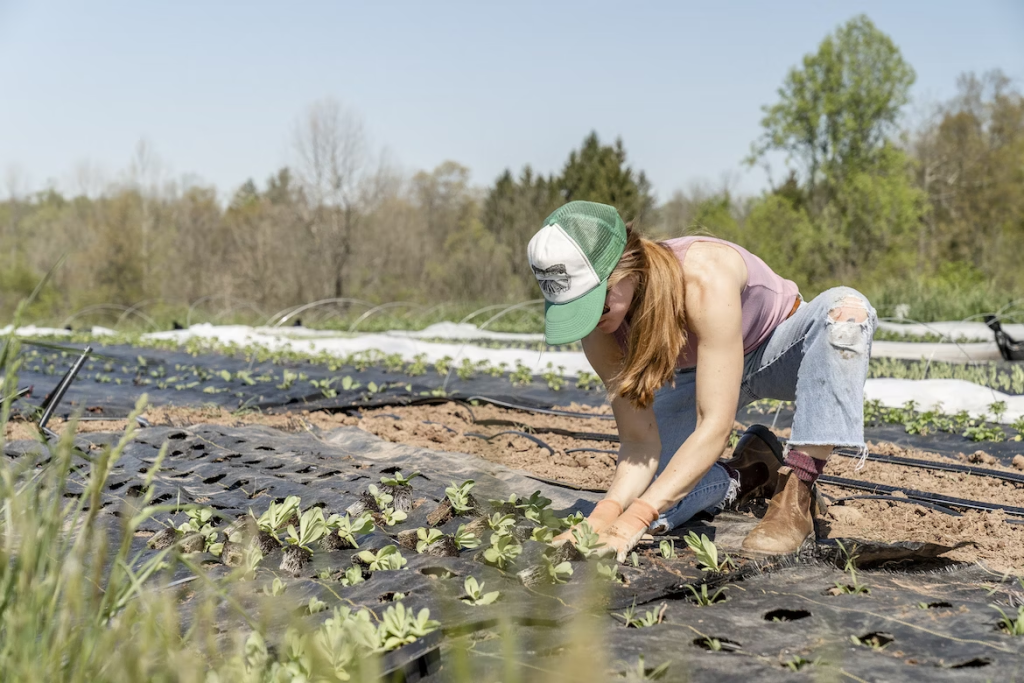Gardeners, farmers, and green-thumbs alike understand the value of rich, fertile soil. After all, a thriving garden is the reflection of a well-nourished foundation.
But how does one go about improving the quality of their soil? With so many elements to consider — pH levels, nitrogen content, drainage — is there a clear-cut path to ensure your garden beds will produce luscious plants and bountiful yields?
Fear not, dear reader, for you’re in good hands.
In this edition of green goodness, we take a deep dive into this subject and present practical ways to boost your soil’s quality. We’ll share valuable techniques that are both nature-friendly and effective in giving your garden that extra push it needs.
Let’s jump right into it.
Step 1: Know Thy Soil
Before diving headfirst into the world of soil improvement, it’s critical to take a step back and get to know your soil intimately. This preliminary investigation will increase the effectiveness of your gardening endeavors.
So how exactly do you familiarize yourself with the ground beneath your feet?
Start by scooping up a generous handful of soil and closely observing its texture. It’s likely to fall into one of three categories: sandy, loamy, or clay-like.

Sandy soils possess a coarser texture often seen on beaches. These granules resist clumping and easily disintegrate in your hand. This larger particle size allows for greater air circulation and efficient water drainage.
With its naturally fragile structure, sandy soil often struggles to retain moisture and essential nutrients, which presents unique challenges for cultivating plant life.
Loamy soil, on the other hand, is considered an ideal medium for supporting vegetation growth. Balanced in its composition of organic matter and minerals, loam exhibits both good aeration and moisture retention capabilities.
As you pinch loamy soil between your fingers, you’ll notice its soft but firm consistency — falling apart when returned to the ground but retaining its form under slight pressure.
If your soil holds tightly together and feels sticky in your fingers, chances are it’s predominantly composed of clay particles.
Clay soils are heavy, dense, and slow to drain due to the presence of microscopic mineral particles resulting in smaller pores. While rich in vital plant nutrients, such soils face challenges when it comes to water distribution, oxygen flow, and ease of root development.
Test Soil pH
Now that you’ve got a handle on your soil’s texture, it’s time to delve deeper and examine its pH level. A well-balanced pH is crucial for supporting a thriving garden, so ensuring you’ve got this aspect covered is key.
Lucky for you, there’s an easy and inexpensive way to test your soil’s pH right in the comfort of your own home. Simply combine equal parts of your soil sample with distilled water in a cup and give it a good stir. Next, dip a pH test strip into the mixture and wait for the magic to happen.
Once the strip has had ample time to absorb the liquid — usually just a few moments — you can use the pH scale provided on the test strip package as an interpretative guide. Compare the color of your test strip with this scale to determine if your soil is acidic, alkaline, or perfectly neutral.
Here’s a table that lists typical colors and pH values for universal indicator solution:
| pH Range | Description | Color |
| <3 | Strongly acidic | Red |
| 3-4 | Acidic | Orange |
| 5 | Weak acid | Yellowish-Orange |
| 6 | Slightly acidic | Yellow |
| 7 | Neutral | Green |
| 8 | Slightly alkaline | Blue-Green |
| 9 | Weak alkali | Blue |
| >10 | Strongly alkaline | Violet |
Step 2: Let There Be Compost
When it comes to enriching your soil, one cannot stress the importance of compost enough. More than a simple way to add vital nutrients to your garden beds, it is also a remarkable method to recycle and repurpose what would otherwise be biowaste.
Dead leaves, fruit peels, coffee grounds, and grass clippings may seem destined for the trash bin at first glance; however, these materials are goldmines for microorganisms that improve your soil’s nutrient content.
Creating a compost pile starts with mastering the art of layering green (nitrogen-rich) and brown (carbon-rich) materials.
- Green elements include items like vegetable scraps, fresh grass clippings, and coffee grounds.
- Brown elements comprise dry leaves, small branches, and cardboard.
Striking a balance between these two types of materials is vital to ensure rapid decomposition. Taking the extra effort to balance green and brown components in your mixture will help you avoid odors and ensure that composting proceeds efficiently.
But it doesn’t stop with simply throwing all of these ingredients together. To transform this mix into true black gold, you’ll need to turn your compost periodically and sprinkle it with water to maintain an ideal environment for those magical microorganisms to do their work.
Given enough time, patience, and attentive care, your compost will emerge entirely transformed.
Step 3: The Magic of Mulch
Mulching is another method of boosting your soil’s quality. It serves a dual purpose — preventing weed growth and enriching the soil with much-needed nutrients.
Organic mulches are a fantastic option for nourishing your soil. When added to your garden beds, materials like shredded bark or straw break down steadily over time. As they degrade, these mulches release essential nutrients into the dirt, creating an enriched environment for your plants to prosper.

But the benefits of organic mulches don’t stop there! Spread them around your plants and observe as your thirsty garden retains moisture more effectively than before.
The magic of mulching goes even further by inviting some beneficial critters to take up residence in your garden. Earthworms, for example, will eagerly move into a well-mulched area.
As they burrow and consume organic matter, these friendly creatures contribute to your soil’s structure and nutrient content.
Step 4: When In Doubt, Rotate
Crop rotation might seem like an ancient technique, but its remarkable benefits have stood the test of time. This age-old method helps the soil retain its nutrient-rich qualities, providing a fertile foundation for various crops.
One of the critical aspects of crop rotation is understanding how different plants impact your garden’s soil quality.
For instance, legumes such as beans or peas are known to release nitrogen back into the soil. This vital element acts as a natural fertilizer, replenishing nutrients that other crops may deplete during their growth cycle.

It’s not just about what you plant but how you arrange and sequence these plantings that ultimately affects your garden’s productivity.
To ensure maximum efficiency through crop rotation, start by planning and organizing your planting schedule. Begin with nitrogen-fixing legumes, followed by nutrient-demanding plants like leafy greens, then switch to root vegetables that require enriched soil for healthy growth.
By rotating crops in a thoughtful manner, you’ll create a garden ecosystem that promotes harmony between plants, enriches the soil, and maximizes harvests.
Step 5: Keep Calm and Don’t Dig
The “no-dig” gardening philosophy is an innovative approach that has recently taken the horticultural world by storm. Its central idea is letting Mother Nature work her magic without human intervention.
People are now realizing that tilling or vigorously digging into the earth isn’t always necessary to achieve a flourishing and productive garden. By taking a more hands-off approach, gardeners give nature a chance to regenerate and manage itself.
Charles Dowding has been a leading advocate for no-dig and organic soil management practices.
The no-dig approach championed by Dowding is designed to intensify nature’s resources rather than disturbing precious ecosystems. By leaving soil untouched and allowing it to settle naturally, this method stimulates the proliferation of beneficial microorganisms while effortlessly maintaining overall fertility.
Step 6: Eliminate Compaction
Soil compaction is a foe to both plant roots and the friendly critters that call your garden home. When soil particles press tightly together, it interferes with water absorption, air circulation, and healthy root growth.
No matter what type of ground you have underfoot, sometimes you may determine it’s time to loosen up and breathe life back into it. Follow these simple yet effective strategies to eliminate compaction and amp up your soil quality game:
- Ditch the heavy equipment: Tread lightly on your garden beds to prevent pressing soil particles together. Avoid trampling your garden or using heavy machinery so as not to create compressed pathways that reduce airflow through your soil.
- Get familiar with no-till gardening: Turning the soil over year after year may feel therapeutic, but it sometimes contributes to compaction. No-till gardening involves minimal disturbance of the soil surface, allowing natural processes to work their magic beneath the surface.
- Roll out the red carpet for earthworms: Worms are nature’s best decomposers and aerators of soil — their tiny tunnels act as micro-channels for air and water to move freely in compacted ground. Encourage these vital wigglers by providing organic matter such as compost, mulch, or leaf litter.
- Break up hardpan layers: If you suspect a layer of compacted soil beneath the surface (hardpan), employ tools like a broadfork or a subsoiler to break up these barriers without completely turning the soil.
- Embrace the power of cover crops: Planting cover crops, like legumes or grasses, improves soil structure through their extensive root systems, which penetrate deep into the earth. These roots help break apart compacted layers, enhancing moisture infiltration and facilitating better conditions for nutrient-absorbing fungi.
The Bottom Line
Improving soil quality is an art form — one that requires patience and an understanding of nature’s intricate workings. With the right approach and techniques, you can provide your plants with the best possible foundation for growth and overall health.
Remember, the soil isn’t just dirt — it’s a living, breathing ecosystem teeming with microbes, insects, and organic matter, all working together to create the perfect environment for your cherished flora.
Pay attention to the rich landscape beneath your feet. Observe the soil structure, texture, and its natural inhabitants, as these elements are crucial in determining its quality.
Once you do so, your precious plants will thank you, filling you with pride and awe every time you look at them. Happy gardening!
Was it helpful?

Enamored with the world of golf Jack pursued a degree in Golf Course Management at THE Ohio State University. This career path allowed him to work on some of the highest profile golf courses in the country! Due to the pandemic, Jack began Inside The Yard as a side hustle that quickly became his main hustle. Since starting the company, Jack has relocated to a homestead in Central Arkansas where he and his wife raise cattle and two little girls.

